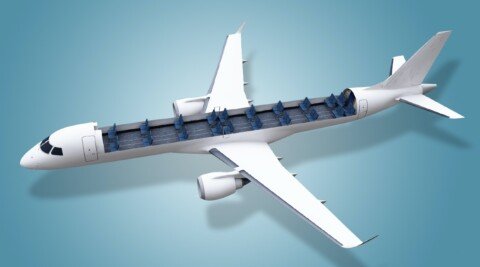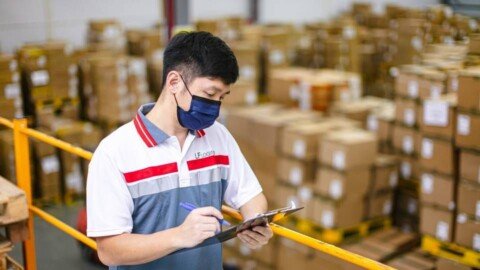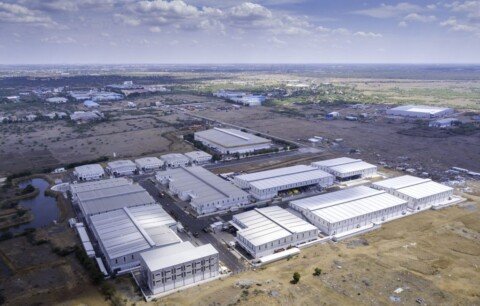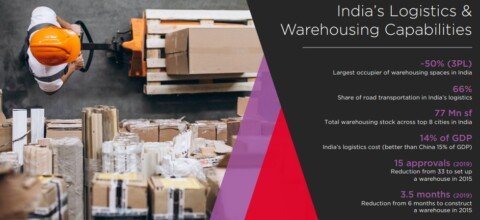As national freight activity is expected to grow about five-fold by 2050, India’s freight transport ecosystem has a critical role to play in supporting India’s ambitious priorities which include global competitiveness, job growth, urban and rural livelihoods, as well as clean air and environment.
While the rising freight transport activity will be critical for the country’s economic growth and competitiveness, it will also exacerbate challenges related to high logistics costs. Logistics costs currently account for 14 per cent of India’s gross domestic product (GDP). The root cause of this inefficiency is heavy reliance on roads to move freight.
By moving freight to rail and optimising truck use, India can reach its goal to reduce logistics cost from 14 per cent of GDP to 10 per cent by 2022 and this can save up to Rs 10 lakh crore in 2022, a coauthored report by government think tank Niti Aayog and Rocky Mountain Institute (RNI)had said last year.
Therefore, most important would be for India to increase the rail network capacity and raise the share of intermodal transportation.
Rail networks can be upgraded by increasing train’s load-carrying capacity, increasing train length, and improving the traffic speed and fluidity. New, specialised heavy-haul corridors can be built to move heavy bulk freight on dense networks, while the concerned agencies can keep prioritising the build-out of Dedicated Freight Corridors (DFCs), which are high-capacity rail networks exclusively for freight. Meanwhile, intermodal’s share of freight movement can be increased through a well-planned exercise of identifying and upgrading high-potential corridors while ensuring better integration across rail, road, and water modes of transport.
Rail’s share in freight transportation in India has been declining since 1951. At present, 71 per cent of freight moves on roads, while only 19 per cent is transported via rail. Rail, a less expensive and less polluting mode of transportation, need to be further reimagined, exploited and made fit to be used to move a higher share of freight over long distances.
“This strategy will lead to reduced logistics costs, reduced carbon emissions and improved air quality and less truck traffic on roads. India can save 10 giga tonnes of CO2, 500 kilo tonnes of particulate matter (PM) and 15 million tonnes of nitrogen oxide (NOx) caused by freight transport by 2050 while improved mode share and efficient logistics can reduce the vehicular-freight activity by 48 per cent in 2050 over a business as usual scenario,” highlighted the report titled Fast Tracking Freight in India.
The report said improved rail mode share, increased logistics efficiency and clean vehicles are the building blocks for a transformative freight paradigm that is within India’s reach. This freight paradigm will be cost-effective with reduced transport costs, clean with more efficient and electric vehicles, and optimised with improved mode share and operational efficiency. Implementing multi-stakeholder collaboration in a phased manner is critical to this transformation.
Meanwhile, in 2018, railways started the “roadrailer” system where contained vehicles can run both on roads and rail tracks. Currently, there are more than 15 Private Freight Train Operators (PFTOs) in India with major companies such as Hind Terminals, DP World, Adani Logistics, CWC all moving their own trains. Indian Railways has allowed PFTOs to run their own Private Freight Terminals (PFTs), a move which can add approximately 20-25 mn tonnes of additional loading capacity and invite investments of more than US$1 bn. Under this scheme, operators can lease rakes from Indian Railways to have their own rakes manufactured.
Completion of DFCs will also enhance the modal share of rail freight in the country from the current 27 per cent to around 45 per cent as in developed countries. In Varanasi, a freight village is being developed along the river to enhance the potential of Eastern DFC and to augment traffic capacity along the National Waterway 1. Inland waterways cargo movement has already started from NW-1 by PepsiCo, Dabur, Emami, IFFCO from Kolkata to Varanasi where a freight village is being developed to connect it to the eastern DFC. The world’s largest container company AP Moller Maersk has also started the movement of goods on that route.
The second most critical factor that the Fast Tracking Freight in India report highlighted was that trucks in India are not used as efficiently as they could be, due to obsolete infrastructure, older vehicles, and the fragmentation of truck ownership. India’s trucking fleets as a whole see low utilisation, a high percentage of empty trips, and trucks that are often overloaded.
India handles 4.6 billion tonnes of goods each year, amounting to a total annual cost of Rs 9.5 lakh crore. These goods represent a variety of domestic industries and products: 22 per cent are agricultural goods, 39 per cent are mining products, and 39 per cent are manufacturing-related commodities. Trucks and other vehicles handle most of the movement of these goods.
To optimise truck use, the report recommended, India can improve transportation practices and warehousing practices and recommended several solutions to achieve the objective. It called for improving load matching using digital platforms and get freight on the right type of truck, depending on the use case.
Maximise vehicle productivity through efficient packaging and loading and improving the placement of warehouses using the principles of optimised network design. It recommended improving the performance of warehouses by implementing advanced digitised tools.
With above, concrete efforts from the government and industry players in a phased manner can unlock opportunities and provide actionable recommendations. Furthermore, to realise the desired growth, more private investment in logistics infrastructure must be encouraged along with easier regulations which can ease the sentiment of some foreign companies.







